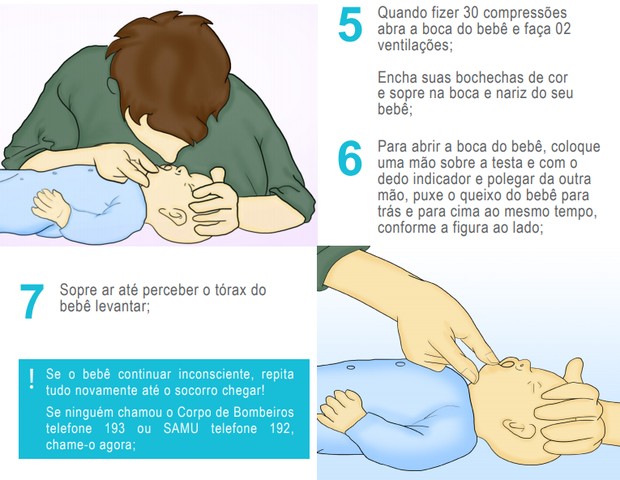o que fazer quando um bebe engasga O que fazer quando um bebé se engasga: passo a passo!
As a parent or caregiver, one of the most terrifying experiences is seeing a baby choke or struggle to breathe. It’s important to know what to do in a situation like this to ensure the safety and well-being of the child. Here’s what you need to know about handling choking incidents in babies. Firstly, it’s important to recognize the signs of choking. A baby who is choking may gasp for air, have difficulty breathing, and make high-pitched sounds while struggling to cough. They may also have blue or gray skin and lips and seem unable to cry or make noise. If you suspect that a baby is choking, act quickly. First, assess the severity of the situation. If the baby is coughing forcefully and is able to dislodge the object causing the choking, you can wait and observe until they calm down. However, if the baby is unable to cough or breathe, it’s important to take immediate action. One of the first things to do is to call emergency services. While waiting for help to arrive, you can start by administering back blows and chest compressions to attempt to clear the obstruction. To do this, hold the baby facedown on your forearm with their head lower than their chest. Use the heel of your other hand to provide firm, quick blows to the baby’s back between their shoulder blades. If the obstruction is still present, turn the baby onto his back and use your index and middle fingers to provide five quick downward chest compressions. Keep alternating between five back blows and five chest compressions until the object becomes dislodged or emergency services arrive. It’s important to note that if the baby becomes unconscious, CPR should be administered immediately. Make sure to take a CPR class so that you are prepared for this type of situation. In order to prevent choking incidents from occurring, it’s important to stay vigilant and take precautions. Make sure to keep small objects and loose foods out of reach of babies and young children. Cut food into small pieces and encourage slow and deliberate eating habits. By being prepared and proactive, you can help prevent choking incidents from occurring and be confident in your ability to handle them if they do. Always remember, in an emergency situation, calling for help should always be your first priority.
If you are searching about O que fazer quando um bebé se engasga: passo a passo! you’ve came to the right web. We have 5 Images about O que fazer quando um bebé se engasga: passo a passo! like O que fazer quando um bebé se engasga: passo a passo!, Saiba o que fazer quando um bebé se engasga and also O Que Fazer Quando Uma Criança Engasga - Relacionado a Crianças. Here you go:
O Que Fazer Quando Um Bebé Se Engasga: Passo A Passo!
 www.vidaativa.ptO Que Fazer Quando Uma Criança Engasga - Relacionado A Crianças
www.vidaativa.ptO Que Fazer Quando Uma Criança Engasga - Relacionado A Crianças
 relacionadoacriancas.blogspot.comO Que Fazer Quando Um Bebé Se Engasga: Passo A Passo!
relacionadoacriancas.blogspot.comO Que Fazer Quando Um Bebé Se Engasga: Passo A Passo!
 www.vidaativa.ptO Que Fazer Quando Um Bebê Engasga? | Por Dr. Richard E Dra. Graziela
www.vidaativa.ptO Que Fazer Quando Um Bebê Engasga? | Por Dr. Richard E Dra. Graziela
 canaldosul.com.brSaiba O Que Fazer Quando Um Bebé Se Engasga
canaldosul.com.brSaiba O Que Fazer Quando Um Bebé Se Engasga
tvi.iol.ptO que fazer quando um bebé se engasga: passo a passo!. Saiba o que fazer quando um bebé se engasga. O que fazer quando uma criança engasga